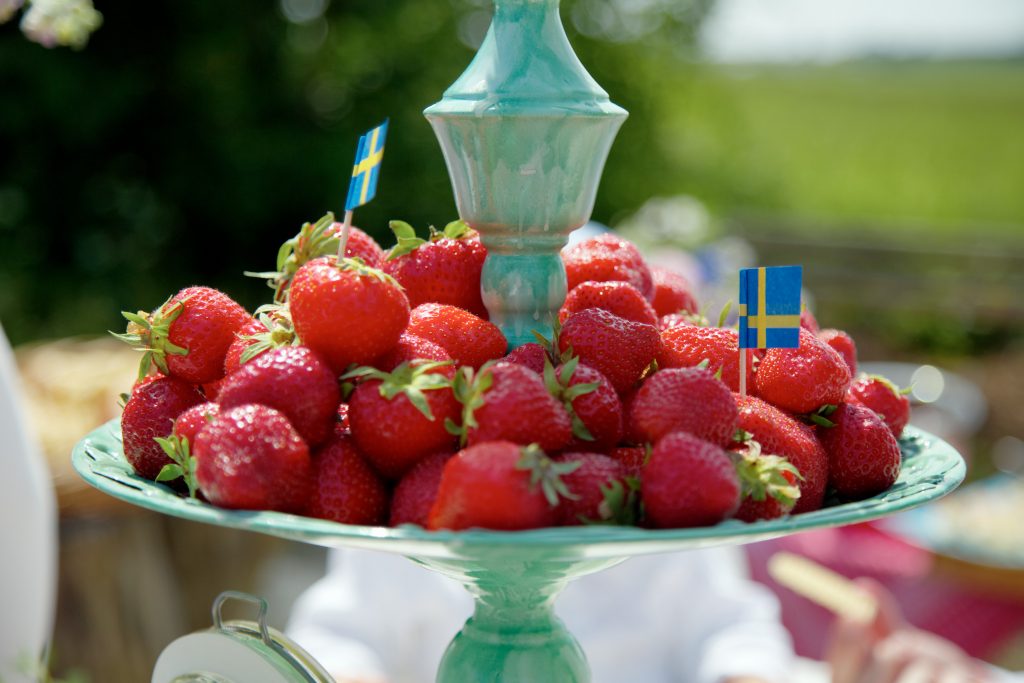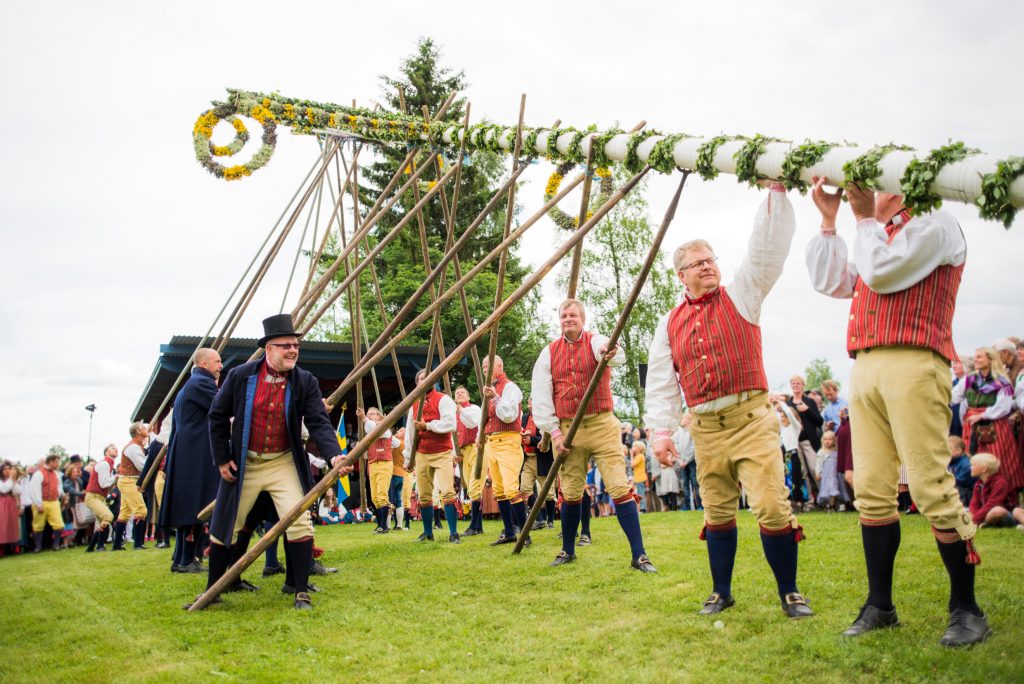- Midsummer was celebrated on the same date every year, 23 June, until 1952. However, in order to adjust the holiday to the work week, it was decided that Midsummer should always be celebrated on a Friday. Nowadays Midsummer’s Eve takes place sometime between 20 and 26 June. For many Swedes, the Midsummer weekend is the start of a long summer break.

Photo by Carolina Romare/imagebank.sweden.se
- Songs and games became a part of the celebration in the beginning of the 1900’s. The song “Små grodorna” appeared in songbooks in the 1920’s. It is orginally a French song commonly sung by the British troops during the Napolean wars in the 1800’s.

Photo by Carolina Romare/imagebank.sweden.se
- The typical Midsummer menu features different kinds of pickled herring, boiled new potatoes with dill, followed by an evening dinner with some kind of grilled dish. Strawberries and cream are an absolute must. This traditional Midsummer food was however introduced fairly recently. Pickled herring came about in 1800’s with the canned foods industry and the new potatoes (“nypotatis”) were included on the menu much later. In the former rural communities in Sweden, where food was scarce, it was unthinkable to consume potatoes before they were full-grown later in the summer.

Photo by Per Bifrost/imagebank.sweden.se
- “Midsommarstången” (the Midsummer pole) is one of the most famous attributes, sometimes referred to as “Majstång” similar to the English word “maypole”. “Maj” in “Majstång” does not, however, refer to the month of May but to the word “maja” meaning “to dress in leaves”.

Photo by Alexander Hall/imagebank.sweden.se
- The Midsummer night has always been considered to be a time for magical myths and events. This was the night when you should collect healing herbs, roll naked in the dew (for eternal good health) and be able to look into the future. One of the mythical activities that are still practiced by some Swedes today is to collect seven kinds of flowers and put them under your pillow during the Midsummer night. In your dreams you will then see the person you will spend the rest of your life with.
Have a lovely Midsummer weekend!
Sources: Nordiska Museet and The Institute for Language and Folklore
Photos: Image Bank Sweden
